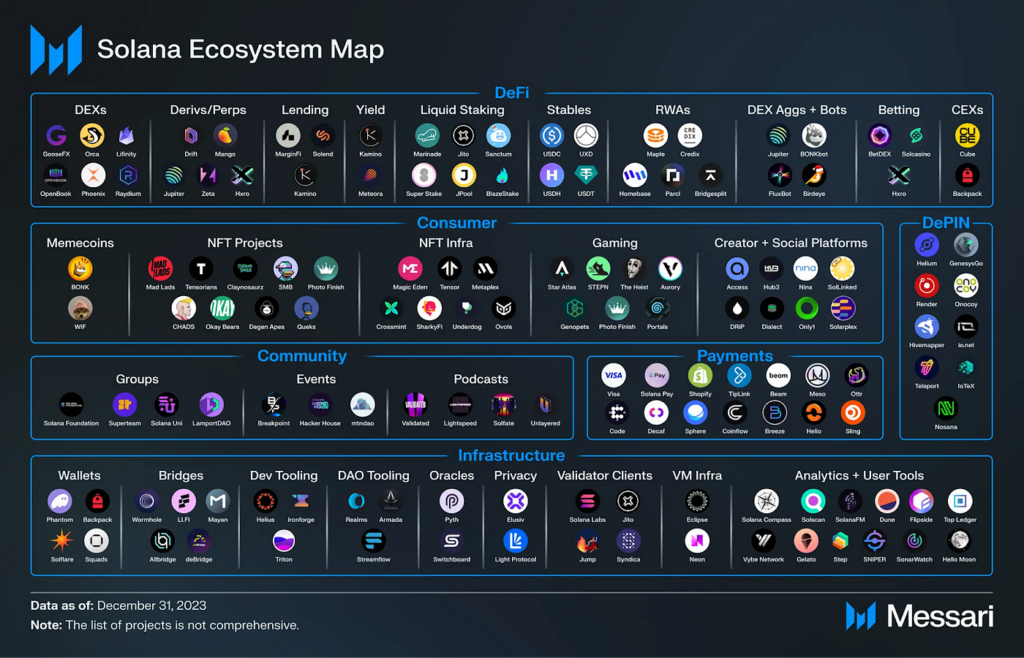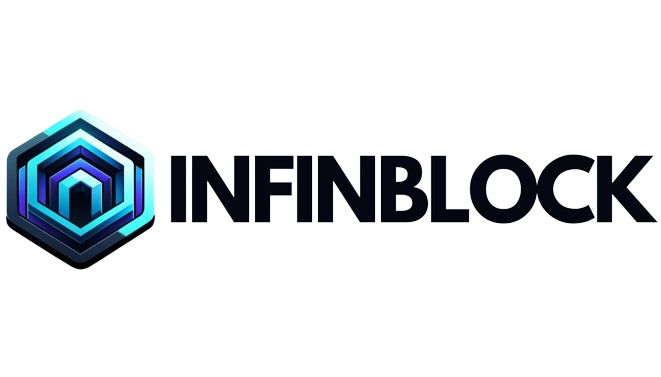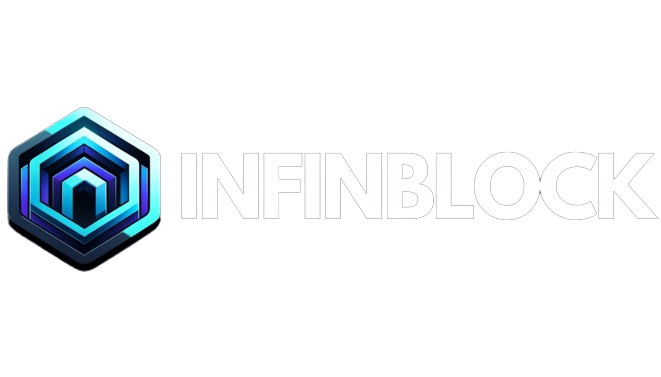The blockchain landscape has been dominated by several key players over the years, with Ethereum often leading the pack due to its early start and robust capabilities. However, a relatively new contender, Solana, has emerged, challenging established norms with its unique architecture and rapid performance. This article delves into the foundational aspects of Solana, exploring its innovative features such as Proof of History (PoH) and Tower Byzantine Fault Tolerance (BFT), and contrasts its performance, cost, and scalability with Ethereum.
The Genesis and Vision of Solana
Founded by Anatoly Yakovenko in 2017, Solana introduces a new layer of efficiency and speed to the blockchain world. Yakovenko’s background in distributed systems at Qualcomm provided a robust basis for envisioning a blockchain that could operate at the speed of modern internet transactions. Solana was born out of this vision, aiming to support scalable applications without sacrificing decentralization or security.
Core Innovations: Proof of History and Tower BFT
Proof of History (PoH)
Solana’s standout feature, Proof of History (PoH), represents a significant shift from conventional blockchain mechanisms. PoH is not a consensus mechanism per se but rather a cryptographic clock that helps to secure and streamline the network’s consensus layer. By encoding the passage of time as data, PoH allows nodes within the blockchain to agree on the time order of events without all nodes having to communicate about the timing of every transaction. This reduces the overhead and latency involved in the consensus process, thereby increasing throughput and efficiency.
PoH works by generating a cryptographic sequence that proves the passage of time between events. This sequence is created using a verifiable delay function (VDF), which requires a specific number of sequential steps to evaluate. Each step produces a unique output that serves as proof of elapsed time. Validators can then use this proof to timestamp transactions and ensure they are processed in the correct order, without the need for continuous communication between nodes.

Tower Byzantine Fault Tolerance (BFT)
In tandem with PoH, Solana uses Tower BFT, an optimized version of the practical Byzantine Fault Tolerance (PBFT) tailored to leverage the synchronized clock. Tower BFT enables the network to reach consensus quickly and securely, maintaining the network’s integrity even in the presence of malicious actors. This synchronization dramatically enhances the blockchain’s ability to process transactions rapidly, supporting Solana’s claim of 65,000 transactions per second (TPS).
Tower BFT operates by allowing validators to vote on the validity of blocks. Votes are weighted by the validator’s stake in the network, and the synchronized clock from PoH ensures that all validators have a consistent view of time. This reduces the complexity of reaching consensus, as validators do not need to exchange as many messages to agree on the state of the blockchain. The result is a highly efficient and scalable consensus mechanism that can support high transaction volumes.
Comparing Solana and Ethereum: Speed, Cost, and Scalability

Transaction Speed
One of Solana’s most notable advantages over Ethereum is its transaction speed. While Ethereum currently processes about 15 to 30 transactions per second, Solana has achieved up to 65,000 TPS due to its innovative PoH and Tower BFT mechanisms. This stark difference not only highlights Solana’s superior processing capability but also positions it as a more scalable solution for applications requiring high transaction throughput.
This performance is achieved through a combination of parallel processing and optimized data structures. Solana’s Sealevel runtime allows multiple smart contracts to run concurrently, taking full advantage of the underlying hardware. By distributing the computational load across many processors, Solana can handle a much larger number of transactions than Ethereum, which processes transactions sequentially.
Cost
Transaction costs on Solana are another critical advantage. The average cost per transaction on Solana remains below $0.01, partly due to the network’s high throughput and efficiency. In contrast, Ethereum’s transaction fees can vary significantly, often increasing during periods of network congestion, which can see gas fees rising to double-digit dollars per transaction.
Low transaction fees make Solana an attractive platform for developers and users alike. For developers, lower costs mean that deploying and interacting with smart contracts is more affordable, enabling the creation of more complex and interactive applications. For users, it reduces the barrier to entry and makes frequent transactions economically viable, fostering greater engagement with dApps.
Scalability
Solana’s architecture is inherently designed for scalability. By decoupling the consensus process from the transaction verification process, Solana maintains high throughput rates irrespective of network size. Ethereum, while scalable through upcoming upgrades like Eth2 and sharding, currently relies on layer 2 solutions to improve its transaction capacity and reduce fees.
Solana’s scalability is further enhanced by its use of horizontal scaling techniques. As the network grows, additional nodes can be added to increase capacity, without degrading performance. This contrasts with Ethereum’s current approach, which requires more complex and potentially less efficient scaling solutions.
Critical Aspects of the Solana Blockchain
Stateful and Stateless Transactions
A critical and innovative aspect of Solana’s blockchain architecture is its distinction between stateful and stateless transactions. Solana introduces a more efficient model where transaction execution can be separated into these two categories. Stateless transactions refer to those that do not alter the ledger’s state, such as simple information checks or balance inquiries. Stateful transactions, on the other hand, modify the state of the blockchain, such as transfers of cryptocurrency or changes to smart contract data. This differentiation allows Solana to optimize processing times and resource allocation by handling these types of transactions differently. Stateless transactions can be processed faster and more efficiently, given they do not require changes to the ledger, thus freeing up more resources for the computationally intensive stateful transactions. This separation not only enhances throughput but also ensures that operations within the blockchain are streamlined and less prone to congestion.
Fee Relayer Networks
Another significant innovation within the Solana ecosystem is the implementation of fee relayer networks. This feature allows users to engage with the network without needing to hold SOL, Solana’s native cryptocurrency, themselves. Instead, third parties can relay transactions on users’ behalf and cover the associated fees. This is particularly beneficial for new or casual users who may not want to purchase and manage cryptocurrency but still wish to interact with applications on the Solana blockchain. By enabling this, Solana dramatically lowers the entry barrier for a wide range of applications, enhancing user accessibility and encouraging broader adoption. Fee relayer networks are a testament to Solana’s user-centric approach, providing flexibility and convenience that are often lacking in other blockchain environments.
Ecosystem and Use Cases

The Solana ecosystem is rapidly expanding, hosting a wide array of decentralized applications (DApps), from decentralized finance (DeFi) platforms to non-fungible token (NFT) marketplaces, and innovative gaming experiences. This growth is supported by Solana’s high throughput and low transaction costs, which make it an attractive platform for developers looking to build complex, high-performance applications without the limitations often encountered on other blockchains.
Decentralized Finance (DeFi)
Platforms like Serum have pioneered decentralized exchanges (DEXs) on Solana, offering near-instant finality and negligible transaction costs, features that are particularly appealing for high-frequency trading. Another notable example is Raydium, an automated market maker (AMM) built on the Solana blockchain. Raydium leverages the central order book of Serum to offer lightning-fast trades, shared liquidity, and new project launches through its platform. This integration not only provides Raydium users with superior trading capabilities but also contributes to the overall liquidity and efficiency of the Solana DeFi ecosystem. Projects like Raydium highlight how Solana’s high-speed infrastructure is ideal for complex financial applications that require real-time performance and reliability.
Non-Fungible Tokens (NFTs)
Solana has become a popular platform for NFT creators and collectors due to its low minting and trading fees, high-speed transactions, and growing marketplace ecosystem. Projects like Metaplex have propelled Solana to the forefront of NFT innovation, providing creators with a robust framework for launching their NFT projects. Metaplex allows artists to mint NFTs with minimal costs, opening up the market to a wider range of creators and making it easier for collectors to purchase and trade digital assets.
Gaming
The blockchain’s ability to handle large-scale, high-speed transactions with minimal costs makes it ideal for blockchain-based gaming. Games like Star Atlas are exploring new frontiers in gaming experiences, combining deep, cinematic-quality gaming with real-time blockchain functionality. By leveraging Solana’s infrastructure, these games can offer seamless, interactive experiences that integrate in-game economies and digital assets, providing players with unique and immersive gameplay.
Decentralized Social Media
Projects like Kin are leveraging Solana’s high throughput and low fees to create scalable social media platforms where users can earn cryptocurrency through microtransactions and interactions within the app. Kin enables users to earn rewards for their contributions, fostering a more engaging and rewarding social media experience. By utilizing Solana’s infrastructure, Kin can process thousands of transactions per second, ensuring that users can interact and transact in real-time without experiencing delays or high fees.
Conclusion
As blockchain technology continues to evolve, Solana stands out as a significant innovation, pushing the boundaries of what is possible in terms of speed, cost-efficiency, and scalability. While Ethereum continues to play a crucial role in the blockchain ecosystem, Solana’s unique contributions offer a compelling alternative for developers and users seeking performance at scale. The ongoing developments in both ecosystems will likely shape the future trajectory of blockchain technology, making it an exciting area to watch.


Unlocking the Power of Solana: A Comprehensive Guide
Dive into our exclusive series on Solana, where we explore the blockchain’s groundbreaking features and capabilities. From understanding Solana’s innovative consensus mechanisms to setting up your own development environment, we cover everything you need to become a proficient Solana developer. Join us as we unravel the complexities of this high-performance blockchain and showcase its potential in decentralized applications. Whether you’re a blockchain enthusiast or an aspiring developer, our detailed guides and practical tutorials will equip you with the knowledge to excel in the Solana ecosystem. Start your journey with us and unlock the full potential of Solana today!



 Bitcoin
Bitcoin  Ethereum
Ethereum  Tether
Tether  XRP
XRP  USDC
USDC  TRON
TRON  Lido Staked Ether
Lido Staked Ether  Dogecoin
Dogecoin  Cardano
Cardano